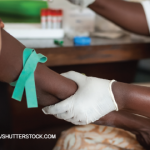A recent expert panel on bone disease in HIV infection suggests that HIV should be considered a risk factor for bone loss. Further, they recommend screening for fragility in all HIV-infected postmenopausal women and all infected men older than 50 years.15 While limited, there are data demonstrating effectiveness of bisphosphonates; in contrast, there is no clear evidence that vitamin D replenishment is effective.13,15 A clinical algorithm has been recently proposed.15
Immune Reconstitution Inflammatory Syndrome (IRIS)
IRIS is a complication of great interest and clinical importance in HIV infection and refers to a condition most frequently observed in patients with advanced HIV who experience paradoxical worsening of preexisting infectious processes following the initiation of cART.16 Preexisting infections in individuals with IRIS may have been previously diagnosed and treated, or they may be subclinical and later unmasked by the host’s regained capacity to mount an inflammatory response.
In addition to IRIS reactions from occult infections, paradoxical inflammatory reactions can occur, heralding exacerbations of previous occult or quiescent autoinflammatory disease or the appearance of a new one.12,17
IRIS reactions resembling RA, systemic lupus erythematosus, sarcoidosis, autoimmune thyroid disease and other conditions have all been described.
This disorder is generally self-limited, and management is generally conservative. However, extreme examples requiring immunosuppression have been reported.
4 Things Rheumatologists Need to Know
- Conduct HIV testing in the rheumatology office. Although HIV testing may seem outside our spectrum of practice as rheumatologists, we are convinced it is logical and should be incorporated into screening procedures.Rheumatologists already screen for hepatitis B and C in an extended and increasing range of settings. HIV is epidemiologically linked to both of these bloodborne viruses and, thus, could easily be included in a screening panel whenever hepatitis B and C are tested for. Further, the CDC recommends that healthcare providers test everyone between the ages of 13 and 64 at least once as part of routine healthcare and indicates that pretest counseling is not necessary; patients must merely be informed so they may opt out.18,20,15 We prefer language along the lines of: “We are going to screen you for a number of infections, including hepatitis B and C and HIV as part of this evaluation.” As a result, we have virtually never had a patient refuse; occasionally, patients will relate to us that they have already been tested.
- Be aware of safety issues when using immunosuppressives, including biologics, in HIV-infected patients with serious rheumatic comorbidities.
The treatment of any patient with a systemic inflammatory rheumatic disorder with a chronic infection is indeed a setting that should give us pause, because virtually all of our therapies may compromise the integrated immune response. Although systemic inflammatory disorders in the setting of HIV are rare, occasionally such patients may require immunosuppression. Rheumatologists may draw on a formidable experience from the transplantation world demonstrating that intense and prolonged immunosuppression may be well tolerated, if the patient has a well-controlled viral load and maintains a CD4 cell count above 200 cells per cubic milliliter.19 Further, although there are no prospective trials examining the safety of biologics, case reports and small series suggest that biologics, especially TNF inhibitors, may be safe in similar settings.20 Whenever HIV patients with rheumatic comorbidities are managed, it should be done in close cooperation with an engaged HIV practitioner. - Continue learning about the new and emerging rheumatic complications of HIV infection.
In the article above, we described the emergence of AVN, osteoporosis and IRIS as complications of special interest. New complications and disorders will no doubt evolve in the future. - Be aware of and screen for critical drug–drug interactions in the treatment of HIV-associated rheumatic diseases. With an aging HIV-infected population, an increasing number of HIV-infected patients will inevitably develop the gamut of routine rheumatic problems, ranging from gout to local/regional disorders of tendonitis, bursitis, etc. The treatment of HIV infections is now extraordinarily complicated from a pharmacologic perspective and has outstripped the capacity for even most infectious disease specialists who don’t emphasize HIV in their practice.Currently, five classes of drugs are used to treat HIV. The five classes are nucleoside/nucleotide reverse transcriptase inhibitors (NRTIs), non-nucleoside reverse transcriptase inhibitors (NNRTIs), protease inhibitors (PIs), entry inhibitors and integrase inhibitors.Complicating matters further is that some of the medications (several PIs and one integrase inhibitor) require “boosting” with either ritonavir or cobicistat. Many PIs and both boosters have clinically significant interactions with several medications commonly used in rheumatology (see Table 2). Perhaps the most significant interaction for the practice of rheumatology is that between glucocorticoids and protease inhibitors (especially darunavir, lopinavir, saquinavir), as well as both pharmacologic boosters (ritonavir and cobicistat); all of these HIV medications are potent modulators of the cytochrome P450 enzyme systems, with ritonavir being the most potent. Cobicistat is a relatively new pharmacologic booster as well, one for which there are relatively few data on its interaction with glucocorticoids, although similar effects are highly likely.


